When Remy Renzullo opens his Zoom screen, I’m confronted with a wall of books that serves as the backdrop to the interior designer’s perfectly haphazard semblance. Rainbow order doesn’t dictate anything in this world. Different shapes, sizes, and hues of tomes (and the occasional shoddily hung picture frame) compete for space—a hot commodity in this context. Theoretically, they’re grouped by subject, but, he informs me, even that is a stretch. “I actually find it beyond tedious, people who organize bookshelves too precisely by color or things like that,” Renzullo muses.
The perfectly imperfect bookcase is emblematic of his general approach to aesthetics and design. “ I don’t want my house to look like a period set or a film set or something like that,” he says. “It’s a living, breathing thing.” He’s cultivated a following with his old-world approach to design. But behind an Instagram wrought with 17th-century Spanish art and 18th-century antiques sits a 32-year-old hosting dinner parties to the soundtrack of The Smiths.
“I’m a young person, and I live in a fairly young way. I’m not sequestering myself in some pseudo-grand place, trying to do everything immaculately and perfectly, with bad classical music playing in the background.” Only the shrewd will note the playfulness in that slightly askew picture frame, the oddity in the layers of different eras’ antiques. They’ll sense the undercurrent of the caustic gothic.
This winter, Renzullo merged aesthetic sensibilities for the second time with long-time friends (and frequent dinner party guests) daughters Olympia and Ariadne and their mother, of Carolina Irving & Daughters, on a collection of handmade ceramics. Ahead of the launch, we caught up with the fancifully quotidien decorator to flesh out the contents of his unique sense of style.
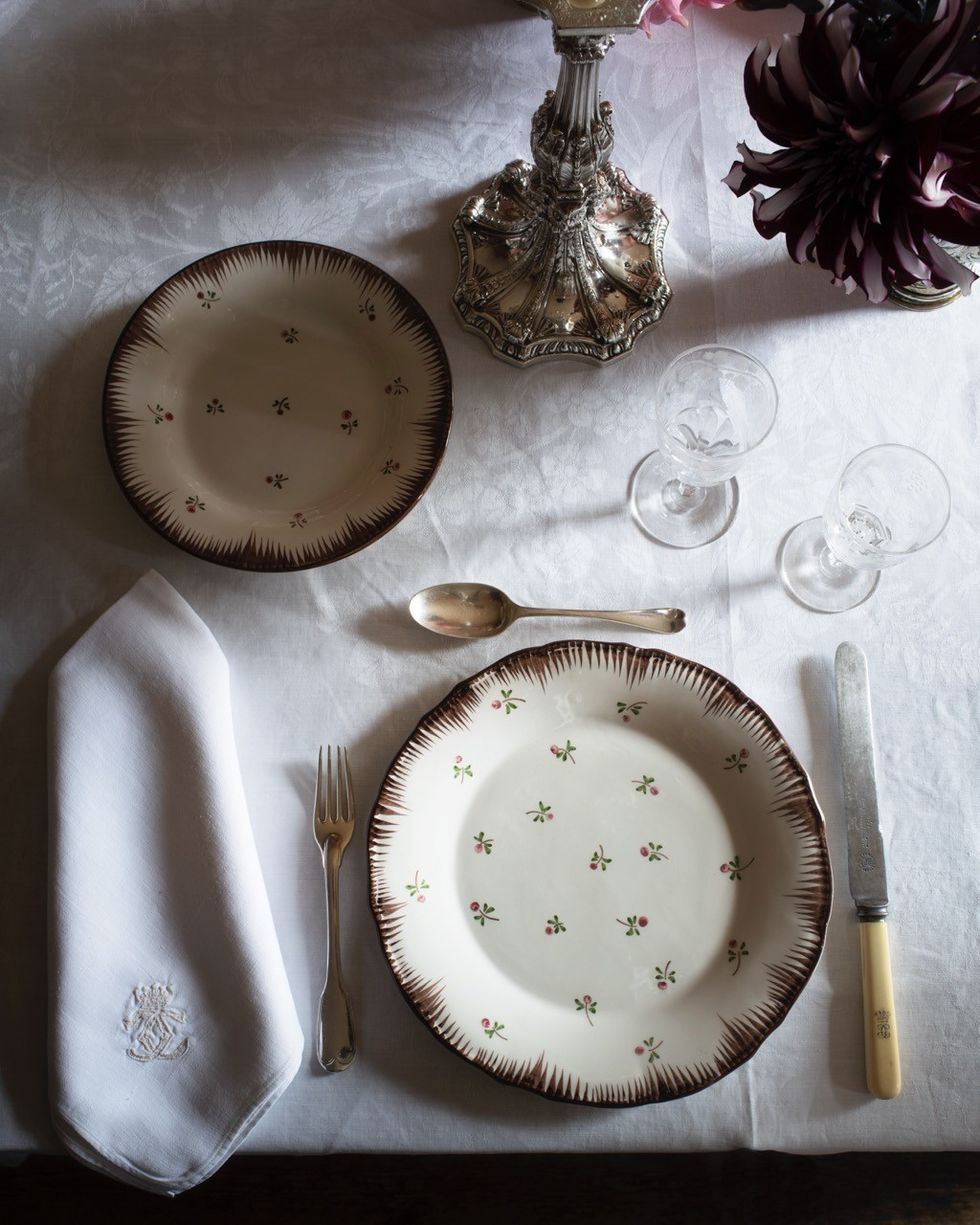
Edward Rollitt/ Courtesy of Carolina Irving & Daughters
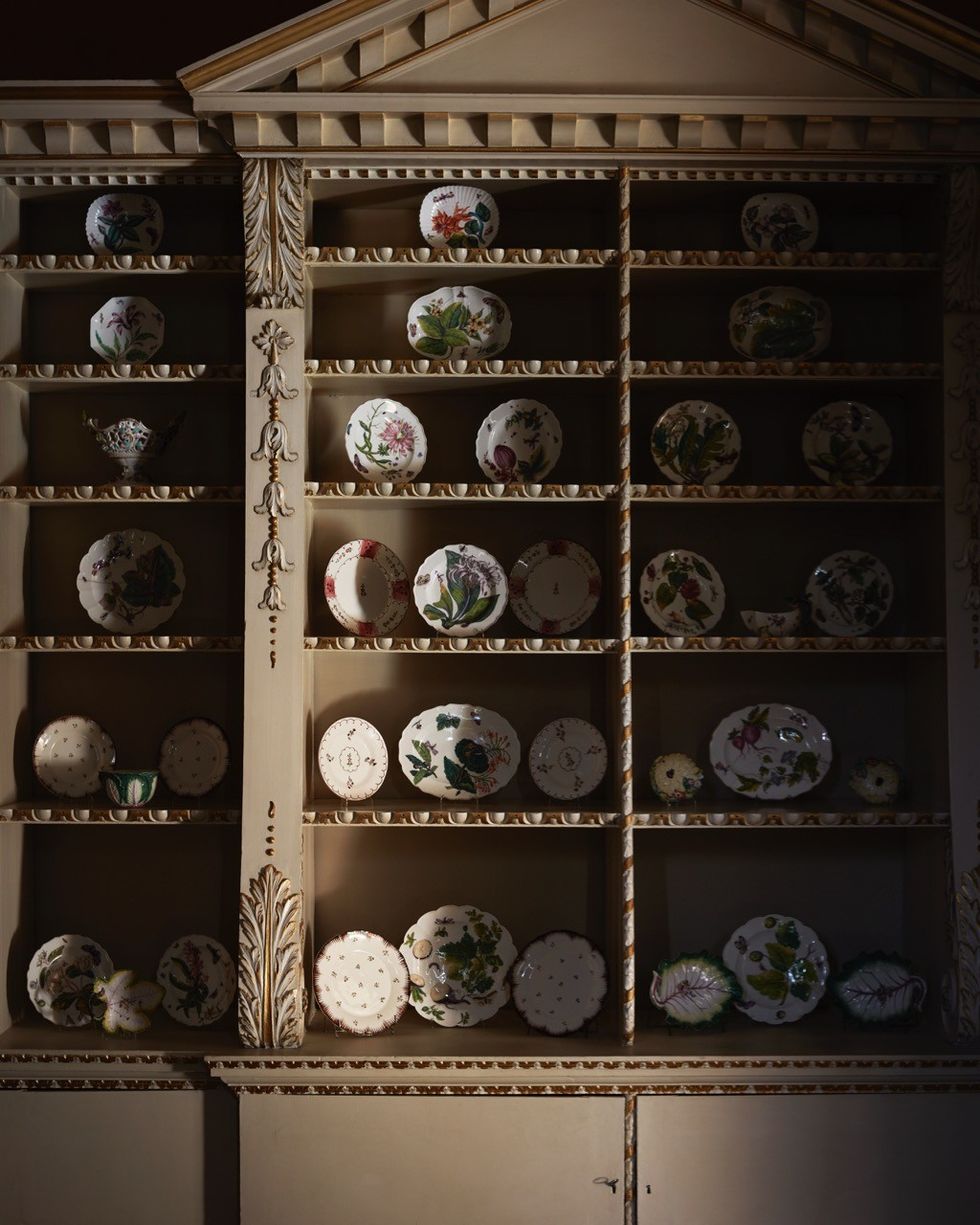
Edward Rollitt/ Courtesy of Carolina Irving & Daughters
I read that way, way back, you initially were interested in fashion. What moved you towards interiors?
“That’s a funny one. I grew up in a somewhat sort of interior-centric family. I knew I wanted to do something creative, but I wanted to find my own medium, so to speak. I guess I fell in love with fashion, as a kid of the nineties. I don’t mean in any way to malign the modern fashion industry, but I think I came to realize it’s a slightly different animal than what I had kind of thought it was going to be, particularly in New York. For example, part of what I love about my job now is that it’s so tied to an individual and a client, and there’s a wonderful dialogue between creator and client. That’s something that’s absent in fashion today, or at least that was my experience.”
I read that Lauren Santo Domingo was one of your first clients.
“Lauren has been a huge supporter. She’s the person who actually convinced me to go into interiors. I always joke, but I really owe my career to Lauren in a lot of ways. Had it not been for her, I don’t know if I would have felt like, ‘Okay, I can do this.’”
What did your first apartment in New York look like?
“Wow. I have to go back a long time. I moved to New York when I was 18. I had just finished boarding school in the middle of Vermont and was so ready to not be in the middle of nowhere anymore. I was living in Chelsea with a really good friend from boarding school. Tough to say at 18, but it had a lot of the hallmarks of what my taste is and how my rooms look today. Some of that was because, frankly, a lot of the stuff in the apartment were things that my parents had given me, but I think that I’ve always, even when I worked in fashion, had the same aesthetic,sensibility, and taste. It’s deepened, developed, and expanded, but I think I can look back at anything and see myself in it immediately.”
You said your parents have influenced a lot of what you’re interested in. Do you think you’re growing into a similar style as your mother, or is it very distinct and different?
“I think there are a lot of commonalities between my taste and my mother’s. The environment that I was born and raised in certainly shaped my aesthetic in innumerable ways. There are a lot of similarities between my taste and my mother’s in the sense of layering history and loving threadbare, beautiful things. My mom has an extraordinary collection of indigenous art, which I love, but it’s not necessarily a huge passion of mine. She has an extraordinary gift of finding the most beautiful things in nature. She collects rocks, nests, all of these sorts of things—all of which I love and really appreciate—whereas I’ve gone toward f appreciating the baroque and 17th, early 18th-century things. Yet, at the same time, I always find myself being drawn back to elements of nature or things that are maybe slightly more ephemeral, and I really credit her for that.”
It seems like you’re very object driven—so what’s your process with a client? Are you mood-boarding and mapping things out, or are you really just collecting piece by piece and figuring it out?
“It really depends from project to project. At the end of the day, I am a decorator, so it’s about more than just the objects. It is about creating a world, and ultimately, the contents of that world shape it and give it a lot of life, but I’m also giving a backdrop to these things, too. I love that process, and I think it really fulfills me creatively. In the beginning, It’s always important to me to find a common language with my client, because even if you want a Remy Renzullo interior, everyone has a different interpretation of what that means.”
You have a very kind of unprecious approach to maybe more precious things, and famously, we all know that it typically takes a lot of effort to look effortless. You have picture frames that are hung imperfectly. How much work goes into the perfectly imperfect versus just slapping it on there?
“It’s funny. I’ve got this room in my house in London, my sort-of-living room with a set of four watercolors lying just under a bookcase. One of them is particularly crooked, and to answer your question, that was completely kind of by chance. Thank God because it’s fantastic, but every once in a while, I put a picture on Instagram, and it really makes people insane. They say,’”Why is this guy not up on a ladder to straighten those? He clearly is not good at his job.’ Always makes me laugh. I love people’s criticism of what I do. I try to create unstudied rooms, and in a lot of ways, the best way to do that is not to overthink it too much. I’m not pre-distressing jeans before I wear them, so to speak. I’m very much about natural imperfection.”
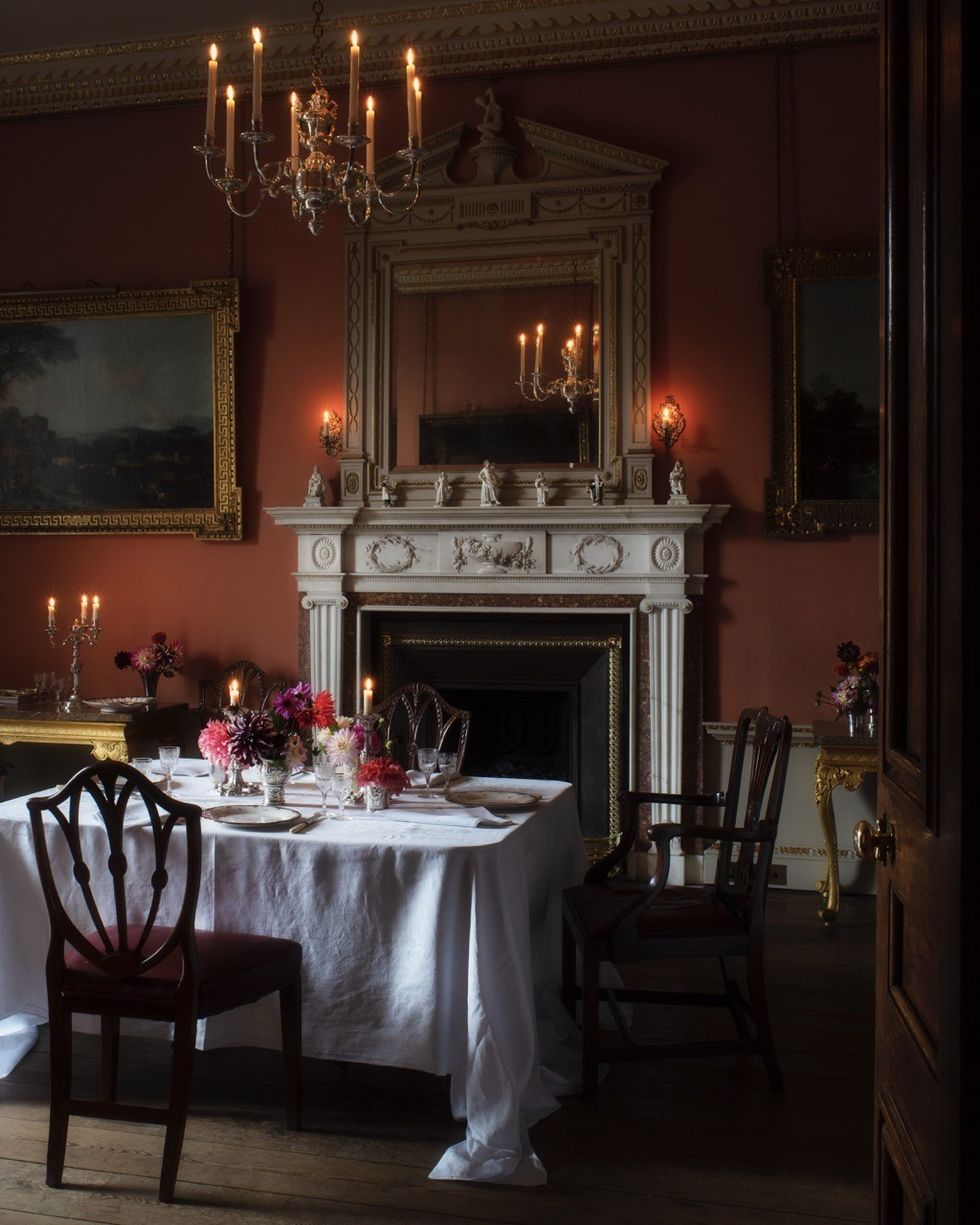
Edward Rollitt/ Courtesy of Carolina Irving & Daughters
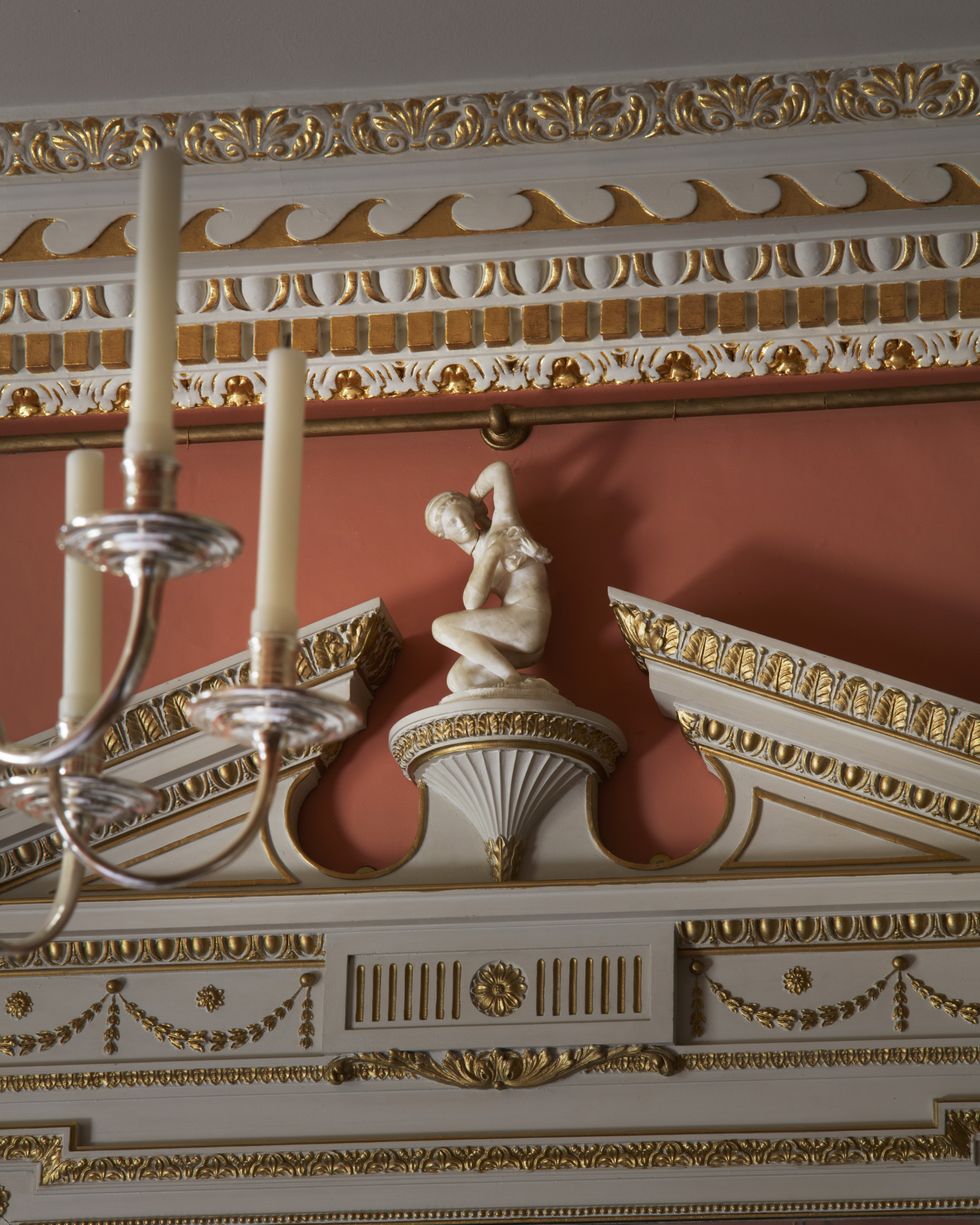
Edward Rollitt/ Courtesy of Carolina Irving & Daughters
One of my mom’s friends is an interior designer, and she always gets really weird about rules like the coffee table leaving six inches on each side of the sofa or whatever.
“My God, I am the opposite of that. The contractor, the architect, the project manager—I’m everyone’s worst nightmare because they’re all sitting there saying,’Well, Remy, show us a plan.’ I’m like, ‘Guys, you’re going to have to trust me, and we’re going to get it all into the house, and it’s all going to make sense.’”
I wanted to talk to you about books, so I did laugh when you turned on your screen and that was your background. I’ve seen that you’re very big into books. Is it mainly reference books or do you read novels, as well?
“I’m a voracious reader and—slightly embarrassing—less so than I used to be because of my fucking iPhone and iPad. I actually don’t watch a lot of movies. I have about eight movies I love and obsessively re-watch, but I’ve always loved reading because it encourages one to imagine an interior. Inevitably, I often try to imagine the world in which these characters live and to imagine their house or the setting. I think that’s the beauty of reading; it kind of allows one to do that. Whereas, with a movie, there are some beautiful film sets and film interiors, but effectively, someone else has done the job for you.
“I love nonfiction. I love biographies. I’m fascinated by the Middle East and a lot of European history, so I read a lot about those particular subjects. I try to read a healthy amount of fiction, as well. I don’t read too much contemporary fiction; a lot of English literature. I have been trying and failing for the last couple of years to make my way through Proust. Actually, there’s no one who wrote about interiors, I think, more beautifully or evocatively than Proust.”
What are some of the hallmark books of your life that have meant a lot to you?
“Oh my God. One of my longstanding favorites, which is nonfiction, is a book called War in Val d’Orcia. It was written by a woman named Iris Origo, and it’s about life in World War II in Italy, in the Val d’Orcia region of Tuscany, about an hour and a half out of Florence. Iris Origo and her husband had this beautiful estate, which her family still has, which I’m quite close to, called La Foce, and War in Val d’Orcia is about the experience of living there from 1942 to 1944. When I was about 12 or 13, my grandmother, an immense reader, gave me a copy. I fell completely in love with it, and whenever I make a new friend or have someone I feel is very close and important, I give them a copy of it to read.
“I also like a bit of dark, caustic humor and wit. There’s a wonderful Irish author called Caroline Blackwood, and she wrote a fabulous book that was shortlisted for the Booker Prize, I want to say, in the sixties, called Great Granny Webster. She also wrote an extraordinary book, The Last of the Duchess, about the last years of the Duchess of Windsor, but particularly about the relationship the Duchess of Windsor had with her long-term lawyer, who basically sequestered her and was, depending on who you ask, a slightly insidious influence over the last years of her life. I love everything by Evelyn Waugh, but my favorite is A Handful of Dust. Again, she’s one of the most tragic and dark authors.”
If you could distill your style into one book, what would it be?
“Oh, God. I don’t know. I think there’s also something that resonates in literature when one can draw parallels, or it feels familiar. There’s an author I love who I had the great pleasure of meeting one time named Donna Tartt, who wrote The Goldfinch, famously, but she wrote another book I love actually much more. It’s called The Secret History. Donna Tartt went to Bennington, and the boarding school that I attended is very near to Bennington, and many people from my school ended up going on to Bennington. When Donna Tartt was there, she knew a lot of people that had gone to my boarding school, and I’d heard a lot of stories. When we met, she said a lot of The Secret History is made up of stories that I’d heard about people who went to Bennington. What I love about her writing is that there’s always a bit of glamour and bit of beauty, which is a huge part of it, but then, there’s always this vaguely New England waspy side to it, which is, I guess you would say, a huge part of me, but then it has this very dark underbelly.”
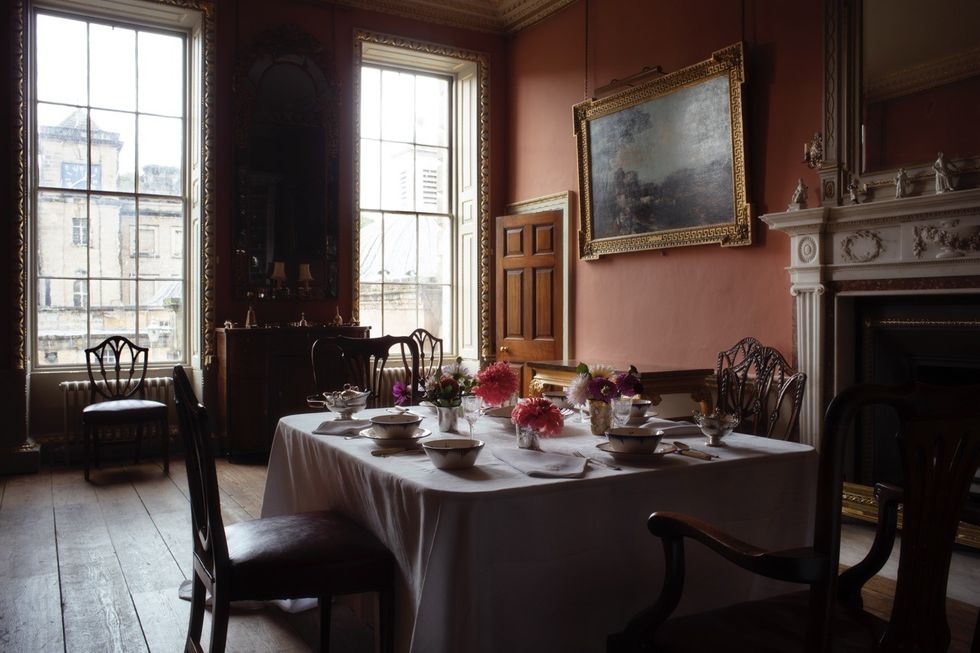
Edward Rollitt/ Courtesy of Carolina Irving & Daughters
You’re a collector of everything, but what are the themes of things you get multiples of?
“I collect snuff boxes because I find them so beautiful. From a young age, particularly when I was a child, I loved anything miniature. Snuff boxes are so beautiful because they’re so small but have such extraordinary decoration and are so varied. I was very close to my grandmother, and when she died, she left me her collection of painted snuff boxes, and I continued to add to that. I bought one recently in Paris, which is made out of mother-of-pearl, and carved into it is Longwood House, which is the house in St. Helena where Napoleon went and eventually died in exile. It’s inscribed with the date of the year before he died, so it was likely made by his aide-de-camp or one of the officers on his staff who went into exile with him. I find that I like Napoleonic stuff a lot.
“I love nests. As I was saying, I have a little bit of this nature thing from my mother, so birds’ nests, hornets’ nests, all manner of nests. I have prints of nests. I’ve got a bunch of those around.”
How do you get dressed, and how would you compare that to how you decorate?
“I hate clothes for the most part. Even though I worked in fashion, I find the notion of what I wear completely tedious. I have two variations of an outfit. I either wear a white t-shirt, one of these Austrian cardigans, and jeans, or I wear a denim shirt, a pullover, and a pair of jeans. There’s not a whole lot to it. I went to dinner the other night, and someone basically accused me of looking too sloppy. But at the same time, I love a beautifully cut suit. I love a beautifully cut jacket. I love real quality. I hate expensive ‘designer’ clothes. I try to avoid buying clothes too much because I think the nicest feeling is to look in my closet and see eight things hanging in it, nothing more.”
It seemed, from stalking your Instagram, that the Venetian loafer has quite a space in your life.
“They’re designed and made by friends of mine, and I absolutely love them, and they’re just the best shoes because they’re so comfortable to travel with and to wear. They look great with a tuxedo, or at the beach, and they take up very little room. I have an absolute loathing of checking bags, so even when I go away sometimes for three or four weeks across sometimes different climates, the Venetian slipper is fantastic because it takes up almost no room and looks great with socks or barefoot.”
I hear you’re quite the dinner party host.
“I hate eating in restaurants more than anything, and conversely, I love having people over. I grew up in rural Connecticut, and spent the summer in rural Maine, where there weren’t really restaurants in the nineties, and if there were, they certainly were not nearly as good as the food that we were having at home. It was always a kind of motley crew of people. When I moved to New York when I was 18, I was like, ‘This whole going out thing isn’t going to work for me.’ I’d never cooked in my life, and I taught myself how to cook. Gradually, I became known for having people over, and I don’t make particularly grand or exciting food. I make a lot of roast chicken and pasta and things like that, but everything I do, I do really well. I like making really simple food, getting people to come over at the last minute. Thanksgiving is my favorite holiday, so we used to do a pre-Thanksgiving with friends in New York and invite as many people as I could fit in my house to come over.”
How did you teach yourself to cook? Was it the Julia Child cookbook, or a YouTube video, or what?
“It’s embarrassing, but I think it might have been just slightly pre-YouTube. I’m trying to think. A bit of Julia Child. I definitely grew up eating a lot of her food in our houses. Cook’s Illustrated is a fantastic magazine. I actually went to boarding school with the daughter of the founder of it, and we had a subscription to it given to the school, so I used to read it. I still think it is the best publication out there. It’s fantastic. Basically, I tried to learn strategies for cooking. Now, it’s been so long since I’ve cooked with any sort of recipe. Cooking is so relaxed and therapeutic for me.”
You said you only have a few films you always re-watch—what are they?
Reversal of Fortune with Jeremy Irons and Glenn Close, which is about Sunny von Bülow. Six Degrees of Separation—it’s a wonderful film and has one of my all-time favorite actresses, Stockard Channing. The English Patient. There’s a series of books that I was obsessed with as a kid called Master and Commander, which were about Napoleonic War seafaring, and Russell Crowe made an adaptation of one about 10 years ago that’s fantastic. I have a longstanding obsession with Lord of the Rings, and I still watch the films all the time. The Constant Gardener with Ralph Fiennes and Rachel Weisz is another fantastic movie. I always like a bit of a plot, a bit of thriller, for sure. Oh, The Hours is another all-time favorite one. I love Virginia Woolf.”
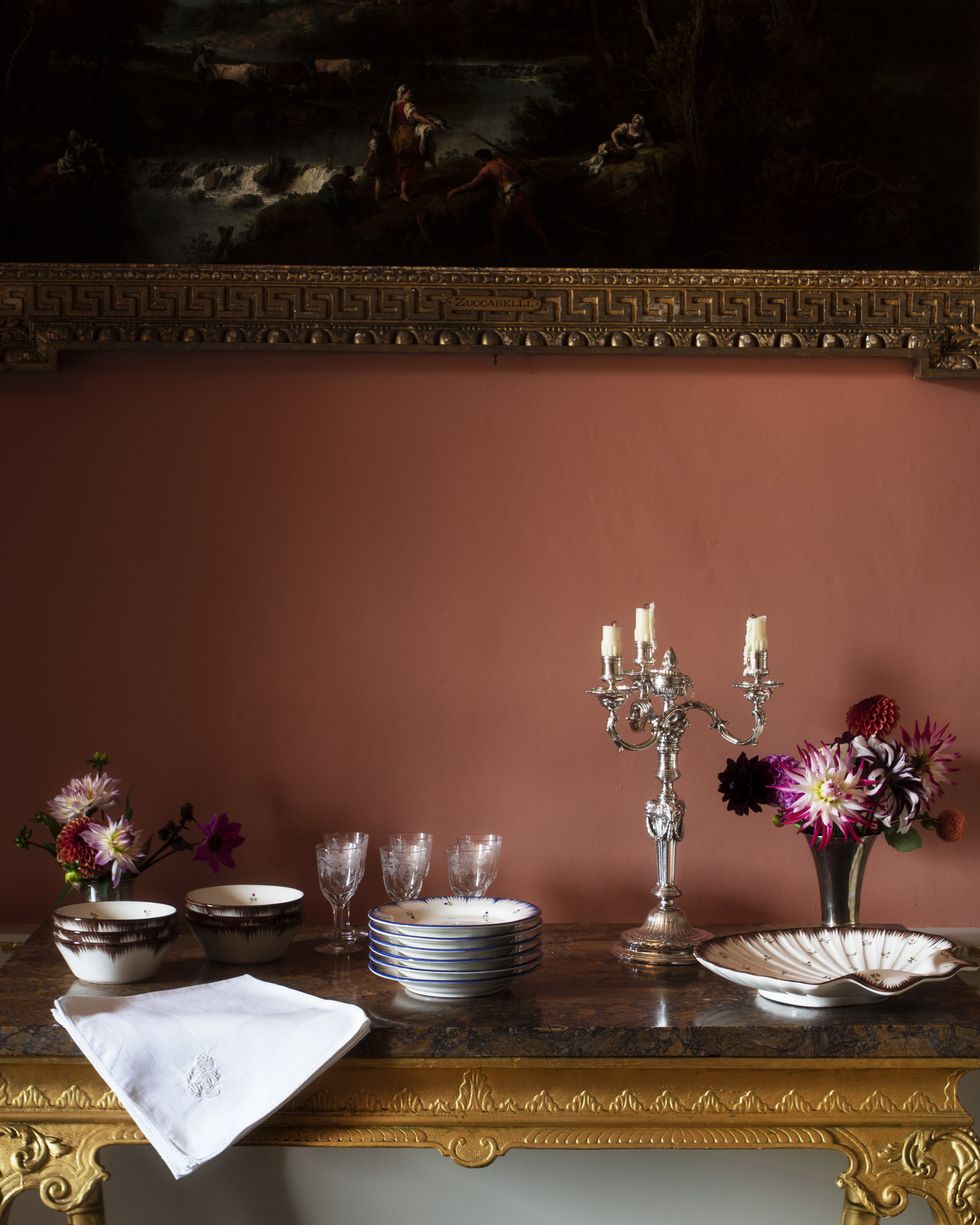
Edward Rollitt/ Courtesy of Carolina Irving & Daughters

Edward Rollitt/ Courtesy of Carolina Irving & Daughters
What music do you listen to?
“A lot of, I guess you would say, indie rock. A lot of New Order, a lot of The Smiths, Radiohead, that sort of thing. I’m still very much like a moody teenager stuck in school.”
Who are some of your favorite artists?
“Oh, God, so many. One of my most favorites is the Swiss artist Jean-Étienne Liotard, who did the most extraordinary pastels, and then a few Spanish painters. I love Velázquez, Zurbarán. I love 17th-century paintings. I love baroque painting, more so than baroque furniture. I love surrealists like Tanguy, Max Ernst, Dali, Leonora Carrington, and Wifredo Lam. I love Alselm Kiefer. Like so much else, I like a bit of darkness and the feeling of loss in it, as well. I love the darkness of Spanish still life paintings from the 17th-century. I think it’s so beautiful. That’s the short answer. And I love Constable’s cloud studies.”
I do want to ask you one question. Are people ever surprised that you’re young and American?
“Yes. Very often. This is obnoxious, but I had to find a photo of a house I’d lived in the other day, and it seemed the most expedient way to do that was to Google my name. It was very funny what people searched for next to my name because it all revolved around my accent, age, or where I’m from.That seems to be a burning question. I think often people can be slightly surprised by my age. I take my job seriously, and the things that I am interested in are often associated with a much older generation of person. I’m 32. I’m a young person, and I live in a fairly young way. I’m not sequestering myself in some pseudo-grand place, trying to do everything immaculately and perfectly, with bad classical music playing in the background. I am who I am.”
It’s New Order, I swear.
“Exactly. I love 18th-century furniture and 17th-century paintings, and I like New Order and The Smiths. I think I’m a person that has a lot of paradoxes, and I think my work is filled with them as well, and frankly, that’s just how I am.”